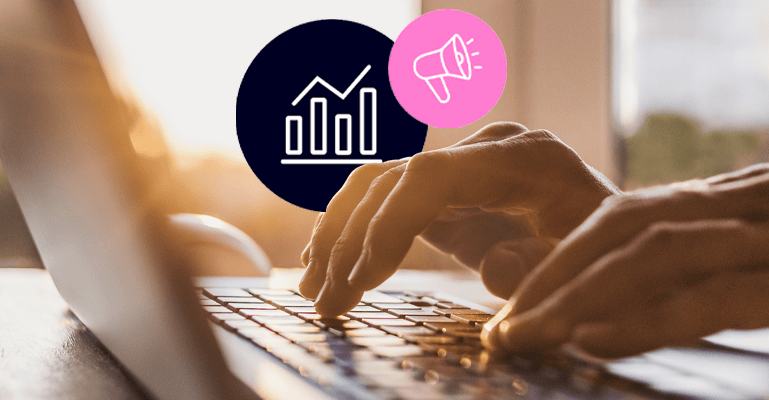If you’ve ever considered buying gold, you are not alone. The precious metal is popular with investors thanks to the distinct role it plays as a “safe haven” asset. There are a variety of ways to buy and trade gold and this step-by-step guide will explain which might suit you best.
Investing in gold and benefitting from fluctuations in its value can be done in a wide variety of ways. One is to hold it in physical form, even as a piece of jewellery, but there are many other ways of buying gold and gaining exposure to the gold market.
Those taking a long-term view and who invest in gold partly because of its distinct characteristics may see price moves in the metal help balance out the performance of their

Why do Traders Choose to Buy Gold?
Answering the question of whether gold is a good investment or not starts with establishing which, if any, of the reasons for buying gold relate to you.
Gold’s role as a “hedge”
Many investors hold gold due to its traditional role as a “hedge” – an investment position that is expected to offset losses in other areas of a portfolio. That idea is based on the price of gold being inversely correlated to some other asset classes. As one goes down, the other goes up, and vice versa.
Currency risk
One asset group that gold is used as a hedge against is currencies, particularly the US dollar. As USD is the world’s reserve currency and is widely held, fears that it may fall in value can be offset by holding gold, which should go up in price if the greenback does weaken.
Inflation and gold
Additionally, gold can also be held as a hedge against
Speculation
Gold’s role as a hedge and for managing risk has ironically led to it being traded for purely speculative reasons. Aware of all the hedging going on, another group of traders can use gold as a measure of how the forces of ‘greed and fear’ are playing out in the markets.
Whichever approach is adopted, there are advantages and disadvantages of gold as an asset.
| ADVANTAGES | DISADVANTAGES |
| The ultimate hedge against a disaster or economic upheaval | US dollar currency risk |
| Protects your wealth | Not a passive investment |
| Diversifies your portfolio | Gold |
| Inflation hedge | A paper gold investment still depends on the integrity of the financial system |
| Un-correlated to stocks and bonds | Over the long term, gold has historically sharply underperformed versus stocks and bonds |
| Holds its value over time | Gold does not generate any passive income, has no yield |
What are the Different Ways to Buy Gold?
There are a range of popular and well-established ways to gain exposure to the gold market. They range from buying gold in physical form as bullion or jewellery, to a variety of financial instruments including CFDs, ETFs, stocks and futures. Each approach has its respective pros and cons.
- CFDs – A gold Contract for Difference (CFD) is a derivative instrument which allows you to track the price of the price of gold but does not represent ownership of the precious metal. CFDs have certain functionality features which appeal to some traders, these include the ability to sell short and use leverage. Both of these features are considered to be high-risk so aren’t recommended for novice traders.
CFDs are complex instruments and come with a high risk of losing money rapidly due to leverage. 75% of retail investor accounts lose money when trading. CFDs with this provider. You should consider whether you understand how CFDs work and whether you can afford to take the high risk of losing your money.
- ETFs – Exchange-traded funds (ETFs) offer a convenient way to hold a position in gold — no need to pay fees on a bank vault or take on the risk associated with having gold in physical form at home. ETFs such as SPDR Gold, and iShares Gold Trust also benefit from real-time pricing so you can easily keep on top of the value of your holding.
- Equities – Some equities perform broadly in line with the price of gold. For example, the gold deposits owned by gold mining companies may still be in the ground, but if the price of the metal moves so will the firm’s share price. The correlation between the price of gold stocks and gold itself can vary. Equities, after all, are also subject to other price drivers such as broader stock market
volatility . - Smart Portfolios – Smart Portfolios are especially curated collections of assets that track a specific theme or strategy – such as the gold market. The @GoldWorldWide Smart Portfolio invests in eToro’s asset universe, which includes stocks in the world’s largest gold companies, gold ETFs and gold derivatives. Smart portfolios allow you to instantly diversify your holdings by investing in an array of assets, traders, and strategies, with one click.
- Futures – Futures exchanges such as CBOT and LME are considered to be the primary source of global gold prices and for example CFD markets in gold typically track the price of gold futures. Retail investors have traditionally faced barriers to entry into the futures market due to the risks involved which include potentially entering into transactions which involve physical delivery of an amount of gold.
- Physical form – An interesting side note is that the most die-hard gold-bugs will stick with having at least some of their position held in physical form where they have physical access to it. Their take on the situation has something of a doomsday feel to it. The thinking is that any scenario that sees gold being used as legal tender would be one so severe that your internet connection, broker’s offices or even bank vaults might no longer be secure.
Trading and holding positions in gold can be achieved in a variety of ways. Each process works in a slightly different way and, as a result, the fees associated with each are also different. This is something to consider and establishing which approach is most cost-effective for your strategy is possible using the information outlined in the T&Cs.
How Do I Start Trading Gold?
With the case made for considering entering the market, the next step is establishing how to buy gold. That process involves establishing your investment aims, considering risk management, and deciding on a strategy.

How to manage risk when trading gold?
Market risk relates to the price of assets you hold going up or down, which generates profits or losses and is as relevant to the gold market as any other financial instrument. Trading systems which include features such as stop-loss orders which can help mitigate market risk.
Another risk to be aware of is “operational risk” which relates to the security of the
Tip: When entering a new market start trading in small sizes; and check which instruments allow trading using small balances.
What are the Strategies for Trading Gold?
The historical reasons that make gold an attractive investment make some investors just want to buy a small amount of gold and adopt a “buy-and-hold” strategy. With this strategy, market timing is everything and patience might be required. There are also alternative strategies to consider.
More active gold trading strategies
Other strategies use fundamental or technical analysis or a combination of the two methodologies. The first approach aims to establish the intrinsic value of gold using information relating to factors such as mining reserves, future production levels and central bank policy. Technical analysis tries to predict price moves through the study of historical market data, price chart patterns, and mathematical formulae.
Another way in which strategies can differ is in terms of their holding periods. Swing trading and day trading strategies typically see traders holding positions for hours or days. Whereas momentum trading strategies might involve holding a position for weeks, months, or years.

How to Trade Gold with eToro
Once you’re set up with a brokerage account buying (or selling) gold is as simple as clicking a button or tapping a screen. Trading can be transacted using a desktop or hand-held device so that you can keep up with market events wherever you happen to be located.
- Login or create an account by clicking here.
- Head to our commodities markets page, select ‘Gold’ to access the gold trading dashboard, then select ‘Trade’.
- Select BUY or SELL depending on the direction you wish to trade.
- Enter the cash amount or number of units you want to trade.
- Review and if required, set the stop loss, leverage, and take profit parameters.
- Select ‘Open Trade’.
Ongoing trade management
Your position in gold will show up in the ‘portfolio’ section of your eToro account. Post-trade management tools include a live profit and loss tracker showing the return on your trade.
Stop-loss or take profit tools can be added to your position at the time of trade execution or at any point afterwards. If either of these instructions is triggered by moves in the market price of gold, your position will be automatically closed out.
If you do not use stop-losses or take profit orders, you can still trade out of your position manually. In the portfolio section of your account, there are drop-down menus to direct you through the process of closing out your position when you feel that the time is right.
Tip: The proportion of your portfolio allocated to gold can be monitored and managed through regular portfolio rebalancing.
Final Thoughts
Millions of traders are now taking advantage of more convenient ways to trade gold. They don’t remove ‘market risk’ or the chance that you make the wrong call but it is possible to draw on quality research and learning materials.
As with all trading, the better prepared you are, the more the odds are tilted in your favour. Choosing the right broker is part of that process.
Learn more about trading and investing in gold by joining the eToro Academy.
FAQs
- How much new gold is mined each year?
-
Roughly 2,500 to 3,000 tons of new gold is mined each year. The countries with the largest estimated reserves are Australia, Russia, and South Africa. You can focus your investments to target distinct areas of the production process or investing in gold itself. Alternatively you can invest in a fund style product which invests in a wide range of areas of the gold sector including the exploration, mining, and processing of gold.
- Which sector has the greatest demand for gold?
-
Gold jewellery represents the largest source of annual demand for gold. A downward trend has been in place for several decades but the jewellery sector still accounts for around 50% of total gold demand.
- What is the size of current global gold reserves?
-
All of the gold ever mined would fit into a crate of 22m cubed.
- How do I Trade Other Precious Metals?
-
Gold is not the only precious metal that can be invested in. Silver, platinum, and palladium, are three more which are widely available to traders and investors. These three metals are used to a greater extent than gold in industrial manufacturing processes. As a result the price of those three metals can be influenced to a greater extent by macroeconomic cycles, rather than their status as a defensive asset.
This information is for educational purposes only and should not be taken as investment advice, personal recommendation, or an offer of, or solicitation to, buy or sell any financial instruments.
This material has been prepared without regard to any particular investment objectives or financial situation and has not been prepared in accordance with the legal and regulatory requirements to promote independent research. Not all of the financial instruments and services referred to are offered by eToro and any references to past performance of a financial instrument, index, or a packaged investment product are not, and should not be taken as, a reliable indicator of future results.
eToro makes no representation and assumes no liability as to the accuracy or completeness of the content of this guide. Make sure you understand the risks involved in trading before committing any capital. Never risk more than you are prepared to lose.


